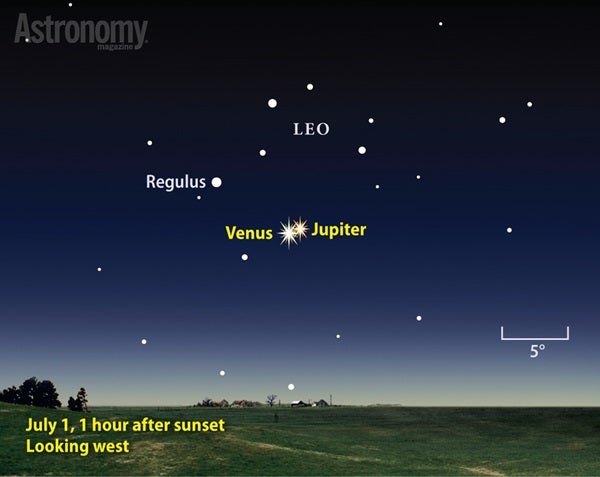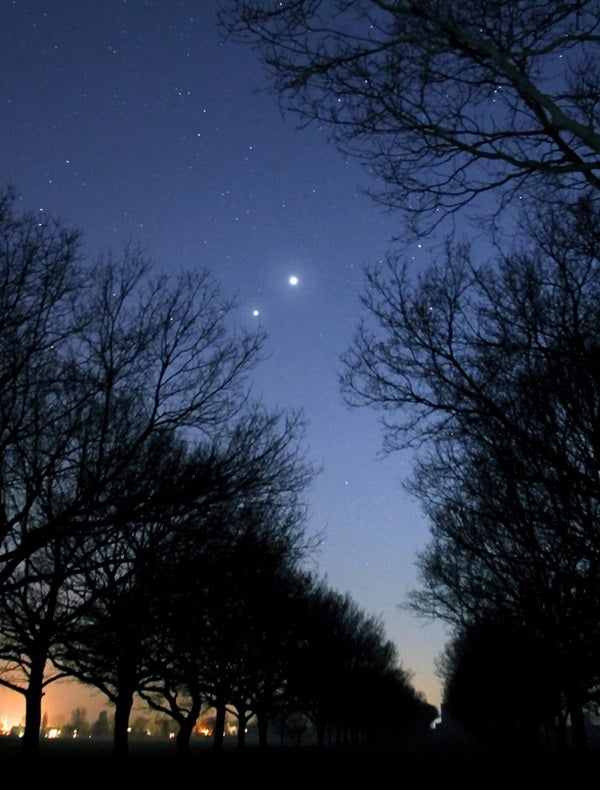Venus crosses into Leo the Lion on June 25. The separation between it and magnitude Jupiter has now shrunk to 3°, and the brilliant planets look like a pair of cat’s eyes catching a car’s headlights in the dark. The gap keeps closing over the next five nights, reaching a minimum of just 20′ (two-thirds of the Full Moon’s diameter) on the 30th. Both planets will appear in a single field of view through a telescope at low power, and they’ll both sport 32″-diameter disks, though Venus’ will only be 34 percent lit. But the two planets’ similar sizes in the eyepiece don’t reflect physical reality — Jupiter’s diameter is some 12 times that of Venus, but it also lies 12 times farther away.
As twilight descends, the two planets seem to grow more brilliant in contrast with the darker sky. They hover 8° to the lower right of 1st-magnitude Regulus, Leo the Lion’s brightest star, which forms the base of Leo’s Sickle asterism.
The planet pair remains visible for about two hours after the Sun sets in early July. During the next few weeks, Venus moves southwest (left as seen from mid-northern latitudes) of its companion. By the 9th, 4° separate the two. Venus then shines at magnitude –4.7, the peak brightness for its current evening reign.
The two planets and Regulus create an ever-changing triangle during July. On the 18th, a slender crescent Moon joins the scene to create a perfect picture opportunity. All four objects lie within a 6° circle, with our satellite less than 1° from Venus. And on the 23rd, both Venus and Jupiter appear 4° from Regulus. The trio sinks into bright twilight by the end of July, setting within an hour of the Sun.











